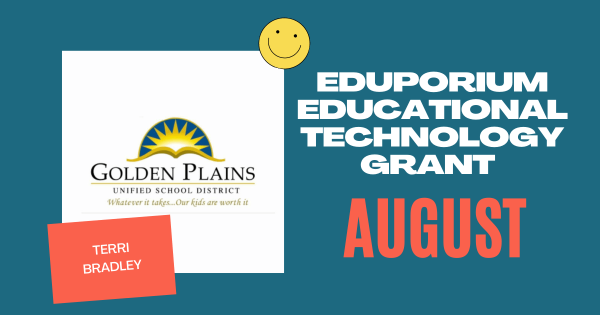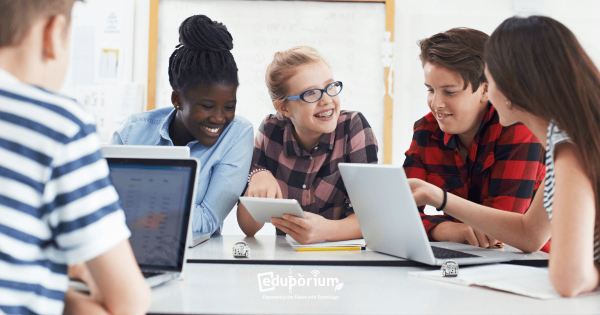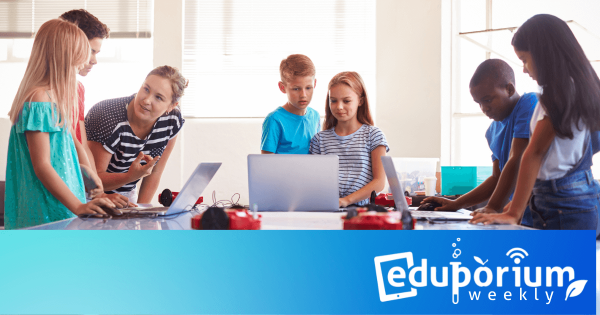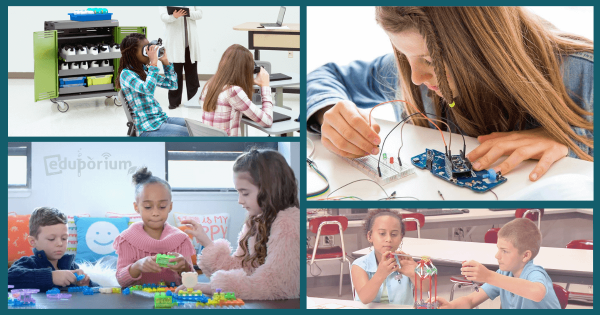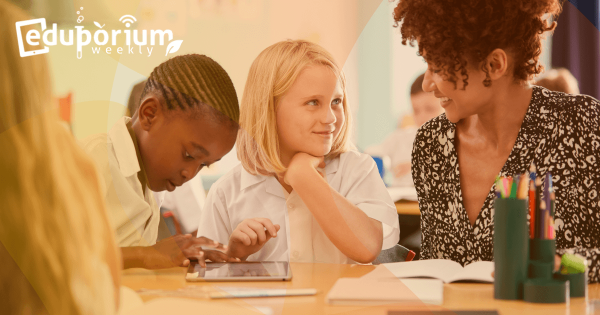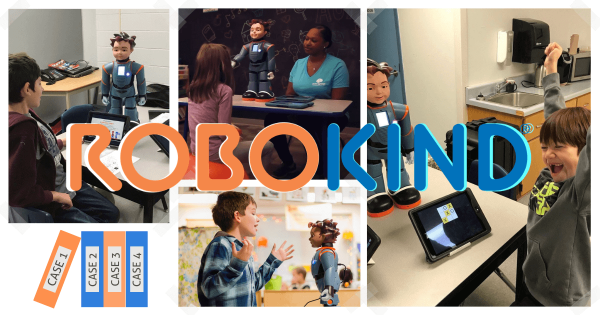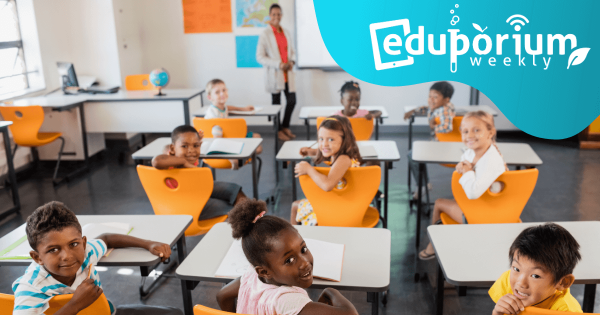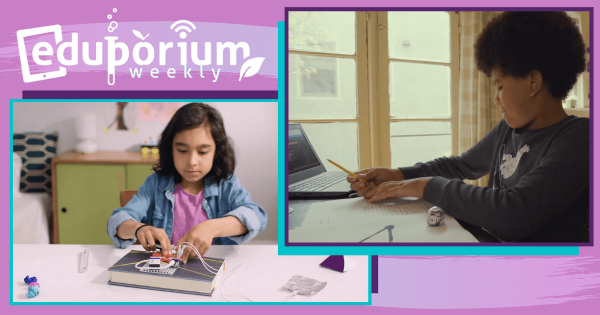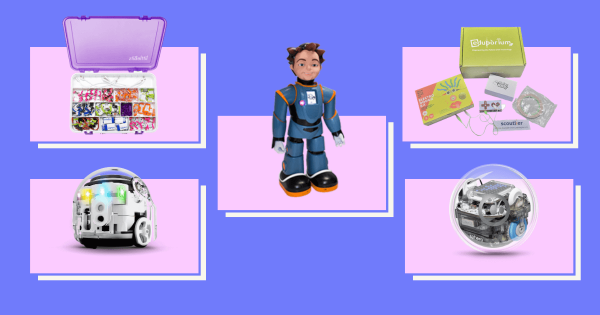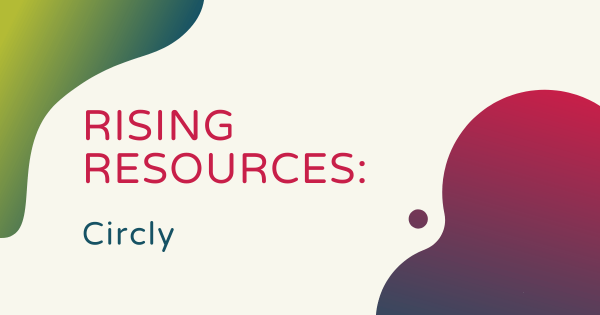Once she settles in to the new school year, Terri is committed to advancing STEAM opportunities for her students. She has a number of lesson plans in mind, including challenging students to find similarities and differences in projects each of them design, helping students deepen their understanding of curricular objectives, and boosting SEL strength.
SEL
Social-emotional learning has evolved so much in just the last few years alone. Today, it's an essential element of a true 21st century learning experience. Even before the pandemic upended learning and transformed the ways in which educators interacted with their students, incorporating SEL was still very much a focal point. In our experiences, this can be done in many different ways. While SEL-inspired curricula can be effective, we sincerely believe in the power of touch. This is what activates social-emotional experiences and bolsters a student's social-emotional foundation. And, fortunately, there are so many opportunities for this in STEAM education. From programming a robot to working together on a design project, students can get the best of both worlds. All it takes is a little bit of strategy in combining these two key areas of 21st century education.
SEL in the classroom or other educational environments benefits students in a number of ways. Whether educators prefer to subtly introduce students to relevant SEL skills, concepts, and competencies or actively work to ensure students collaborate and communicate effectively, it can truly enhance many different types of lessons. Factor in all the new types of daily stressors students are facing as a result of distance learning, traumas, or any other personal experiences and SEL can play a huge role in ensuring they're able to continue learning. With stronger social-emotional health, students also often tend to perform better academically. We believe they can develop their SEL skills in all learning environments. This includes in the classroom, after school, on the playground, and in extracurricular participation. Here, you'll find our thoughts on why this is important and how STEM education can help.
-
MakerEd Experiences in Post-Pandemic Education
Trying to look on the bright side, we’ve joined the optimistic crowd in questioning whether this unprecedented period provided educators, administrators, and learning designers with lessons on educational trends and regularities. To us, the yearlong experience of teaching through a pandemic validates the value of MakerEd and EdTech tools. -
Eduporium Weekly | SEL and Learning Loss
According to the broad acceptance of how learning loss is defined, a large percentage of students will be affected. In order to begin truly addressing this gap, however, teachers might be better off starting with SEL to allow students the chance to adjust and process emotions. From there, they can get in better position to address academics. -
Eduporium Weekly | EdTech Use After the Pandemic
Throughout the remote learning era, for better or worse, students of all ages have truly relied on many different technologies to connect, communicate, and access educational experiences. That’s left many educators, administrators, and parents wondering about the role technology will and should play as students begin to return to normal. -
Eduporium Weekly | Looking At Learning Loss
Most students weren’t afforded the same learning opportunities in the last year and some struggled to access any educational experiences at all. The debate, however, centers on what constitutes ‘loss’ and how that relates to each student. So, what do we know? It’s incredibly difficult to pinpoint levels of learning loss and how they differ among students. -
How the RoboKind Robots for Autism and SEL Make an Impact
The line of RoboKind robots are unlike any others in the education world. Comprised of three facially-expressive humanoids, the RoboKind robots have helped provide support for countless students who learn differently. Each robot offers unique advantages and includes accompanying curriculum designed to open up communication and expression. -
Eduporium Weekly | A Return to In-Person Learning
As the school year winds down, many students and teachers are experiencing some firsts. Some have been in the classroom all year, but others are getting their first taste of that return to normal in-person learning. In many cases, this even means students are meeting their teachers and classmates for the first time. -
Eduporium Weekly | PBL in Remote Learning
PBL involves students working as part of a group most of the time on a community-focused project designed to affect authentic change. You can see how this might be tough to do in a remote environment, but a lot of progress has been made. It takes true teamwork, but PBL IRL (in remote learning) is certainly a possibility. -
5 EdTech Tools for Combining STEM and SEL
Luckily, students still have the potential to use STEM tools to boost their overall social-emotional connections. It comes down to finding the right technologies and aligning those tools with accessibility and relevant projects. Other SEL tools are built more for the classroom and that’s okay, too. Here are a few of the best for combining SEL and STEM. -
Rising Resources | Circly in Remote Learning
Circly is characterized as a visual organizer platform that helps create easier collaboration. It’s free and can help all students organize and visualize ideas or help educators collaborate and learn with peers. Learn why we chose to explore Circly in the latest installment of our Rising Resources blog. Keep reading to learn more about it!




